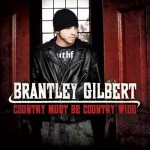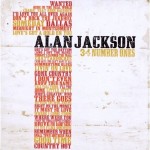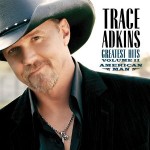
Waylon Jennings


The Best Country Albums of 2010, Part 2: #10-#1
There was a lot of good music out there in 2010, provided you knew where to look. Sometimes, you could even find it on the radio. Here are the top ten albums of 2010, according to our staff:
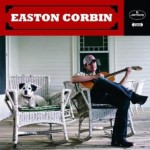
#10
Easton Corbin
Easton Corbin
With the charisma of Clay Walker and the chops of George Strait, Easton Corbin sauntered onto the mainstream country music scene with a hit song that –refreshingly– name-checked “country” in all the right ways. He needs no such affirmation, though, as his debut album is a collection of effortlessly neo-traditionalist songs, ripe with sincerity. It’s fair to compare Corbin to his obvious influences, but there’s something about the natural, youthful effervescence he brings to his music that makes it sparkle all on its own. – Tara Seetharam

A Tale of Four Hits Collections
Four generous hits collections were released in 2010, each one chronicling the entire career of a contemporary country music star. Individually, each double-disc set serve as the most expansive and thorough compilation for each artist. Taken together, they tell the story of country music over the last twenty years.
In the late eighties, Randy Travis did something that no other country star had done before. He became the top-selling country artist by a wide margin without making any musical concessions to pop or rock. In doing so, he tore up the old playbook. Suddenly, you could be a multi-platinum country artists without the added benefit of top 40 radio or accolades from the rock and roll press.

Single Review: Jamey Johnson, "Playing the Part"
 Country boy, you got your feet in L.A. Again.
Country boy, you got your feet in L.A. Again.
The country boy as fish out of the water in Los Angeles. Or New York. Or Detroit. It’s a pretty common theme in country music. Jamey Johnson does his own spin on this theme with his new single, “Playing the Part.” It’s not terribly bad, but it’s not terribly good, either. “Big City” certainly doesn’t have to worry about losing its slot on the Waffle House Jukebox.


How Very Nineties: George Jones & Friends, and other All Star Jams
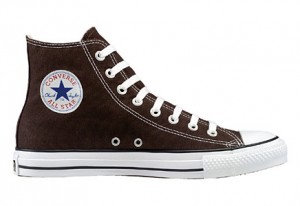 New fans of country music in the nineties were hit over the head with the assertion that country music was one big family. Nothing demonstrated this mythos better than the all star jams that cropped up during the boom years.
New fans of country music in the nineties were hit over the head with the assertion that country music was one big family. Nothing demonstrated this mythos better than the all star jams that cropped up during the boom years.
There were some variants of this approach. A popular one found a veteran star teaming up with one or more of the boom artists to increase their chances of radio airplay. George Jones was big on this approach, with the most high profile attempt being “I Don’t Need Your Rockin’ Chair.” Seventeen years later, it’s amazing to see how young everyone looks – even Jones himself!

ACM Flashback: Single Record of the Year
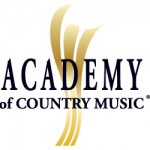 As with the similar CMA category of Single of the Year, looking over the history of this category is the quickest way to get a snapshot of country music in a given year. There is a quite a bt of consensus among the two organizations here, and it is very rare for the winner at one show to not at least be nominated at the other. The winners list here would make a great 2-disc set of country classics, at least for those who don’t mind a little pop in their country. The ACM definitely has more of a taste for crossover than its CMA counterpart, and the organizations have only agreed on 17 singles in the past four decades and change.
As with the similar CMA category of Single of the Year, looking over the history of this category is the quickest way to get a snapshot of country music in a given year. There is a quite a bt of consensus among the two organizations here, and it is very rare for the winner at one show to not at least be nominated at the other. The winners list here would make a great 2-disc set of country classics, at least for those who don’t mind a little pop in their country. The ACM definitely has more of a taste for crossover than its CMA counterpart, and the organizations have only agreed on 17 singles in the past four decades and change.
As always, we start with a look at this year’s nominees and work our way back to 1968.
2010
- Zac Brown Band, “Toes”
- Billy Currington, “People Are Crazy”
- Lady Antebellum, “Need You Now”
- Miranda Lambert, “White Liar”
- David Nail, “Red Light”
There’s usually a “Huh?” nominee among the ACM list in recent years. This year, it’s David Nail. Good for him! Currington hasn’t won yet for this hit, even though he got himself a Grammy nomination for it. With Lady Antebellum reaching the upper ranks of the country and pop charts with “Need You Now”, my guess is that they’re the presumptive favorites. Then again, Miranda Lambert is a nominee for the third straight year, and she’s up for her biggest radio hit.
2009
- Trace Adkins, “You’re Gonna Miss This”
- Jamey Johnson, “In Color”
- Miranda Lambert, “Gunpowder & Lead”
- Heidi Newfield, “Johnny and June”
- Brad Paisley, “Waitin’ On a Woman”
Adkins has been a fairly regular fixture on country radio since 1996, but this was his first major industry award. He also won the ACM for Top New Male Vocalist in 1997.

ACM Flashback: Album of the Year
 The ACM Awards has traditionally been overshadowed by the CMA Awards, despite its longer existence. This is for several reasons. First, the ACM originally existed to emphasize the West Coast country music scene, whereas the CMA Awards represented Nashville from the start. The ACM has also been more commercially-oriented from the beginning, as the history of this category proves. Eighteen of the last twenty winners in this ACM category are multi-platinum sellers, and the organization allowed greatest hits albums to compete for more than a decade.
The ACM Awards has traditionally been overshadowed by the CMA Awards, despite its longer existence. This is for several reasons. First, the ACM originally existed to emphasize the West Coast country music scene, whereas the CMA Awards represented Nashville from the start. The ACM has also been more commercially-oriented from the beginning, as the history of this category proves. Eighteen of the last twenty winners in this ACM category are multi-platinum sellers, and the organization allowed greatest hits albums to compete for more than a decade.
Still, the ACM category has bragging rights of its own. Critically-acclaimed albums like Storms of Life, Trio, Killin’ Time and Crazy Ex-Girlfriend won at the ACMs but were overlooked by the CMAs. Additionally, women have also been far more successful at this ceremony. Only five women have ever won the CMA Album trophy, and one of them was Sissy Spacek! At the ACMs, women have dominated the category for the past three years, and the category has honored everyone from Loretta Lynn and Donna Fargo to K.T. Oslin and Shania Twain.
A special note about ACM flashbacks. Like the Grammys, the ACMs issue their award for a given year the following year, so the awards for 2009, for example, are given out in 2010. For the purposes of the flashbacks, Country Universe notes the year the award is presented. While the ACM first presented awards in 1966, the Album category wasn’t introduced until 1968.
As with other flashbacks, we begin with a look at this year’s nominees:
2010
- Lady Antebellum, Lady Antebellum
- Miranda Lambert, Revolution
- Brad Paisley, American Saturday Night
- Carrie Underwood, Play On
- Zac Brown Band, The Foundation
Three previous winners – Miranda Lambert, Brad Paisley, and Carrie Underwood – compete against the debut albums of two hot bands. Lady Antebellum and Zac Brown Band each picked up a Grammy this year and are well represented on the rest of the ACM ballot. This is a very competitive race. Even the sales-friendly nature of the ACMs doesn’t help much here, as four of these albums are platinum and Lambert’s just went gold.
2009
- Jamey Johnson, That Lonesome Song
- Montgomery Gentry, Back When I Knew It All
- George Strait, Troubadour
- Taylor Swift, Fearless
- Carrie Underwood, Carnival Ride
Taylor Swift became the third consecutive female artist to win in this category, a feat that would’ve seemed unthinkable earlier in the middle part of the decade, when country radio all but exiled women from radio.

Age Ain’t Nothin’ But a Number
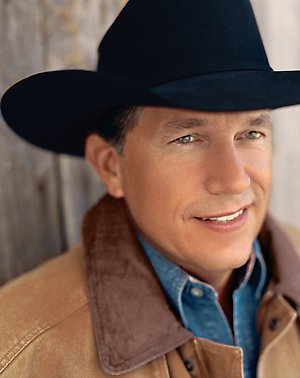 While Taylor Swift mania continues to grow, there’s another impressive accomplishment being achieved by two veterans of country music on the opposite end of the age spectrum.
While Taylor Swift mania continues to grow, there’s another impressive accomplishment being achieved by two veterans of country music on the opposite end of the age spectrum.
Contrary to what is commonly believed, there has always been a ceiling on how old you could be and still get country airplay. This year, both George Strait and Reba McEntire have been working steadily to shatter that ceiling.
Take a look at the age of country legends when they earned their most recent top ten solo hit:

Bargain Hunter: The Rodney Crowell Collection
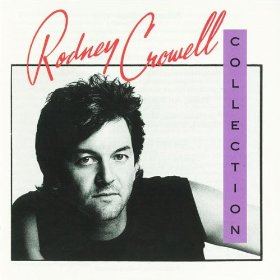 When Rodney Crowell had his gold-selling commercial breakthrough with the album Diamonds & Dirt, his previous label was quick to capitalize on his success. Usually, pre-hit cash-in CDs are little more than a curiosity, but Crowell’s is the exception.
When Rodney Crowell had his gold-selling commercial breakthrough with the album Diamonds & Dirt, his previous label was quick to capitalize on his success. Usually, pre-hit cash-in CDs are little more than a curiosity, but Crowell’s is the exception.
There is a smorgasbord of great material here, including early versions of songs that Crowell would see other artists have success with the same songs.

